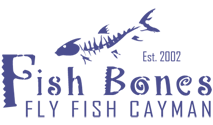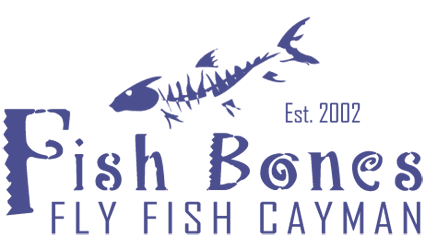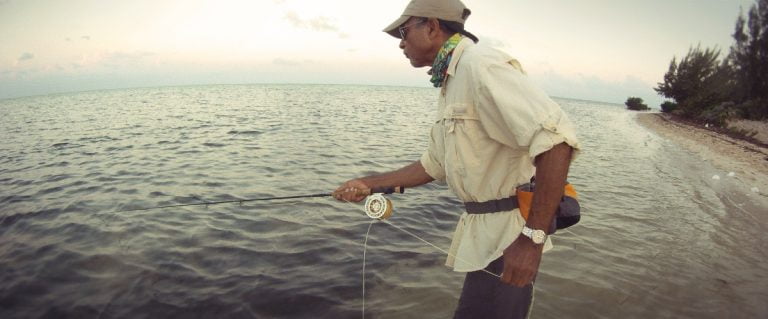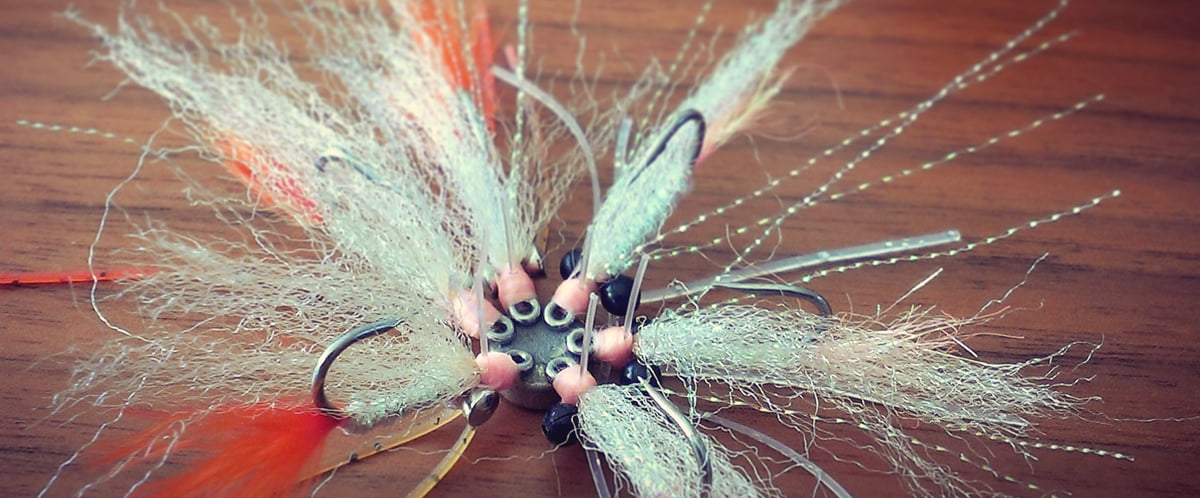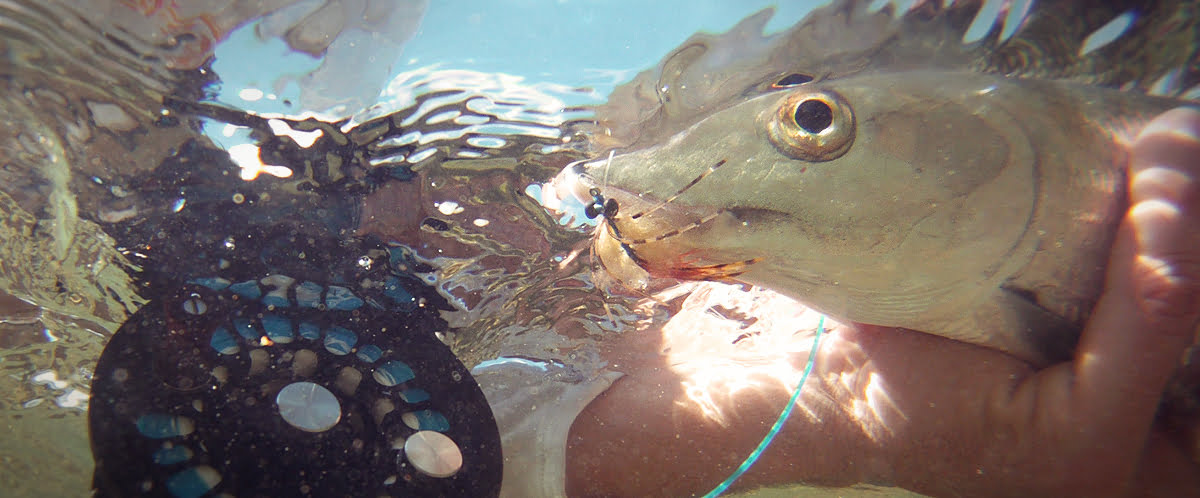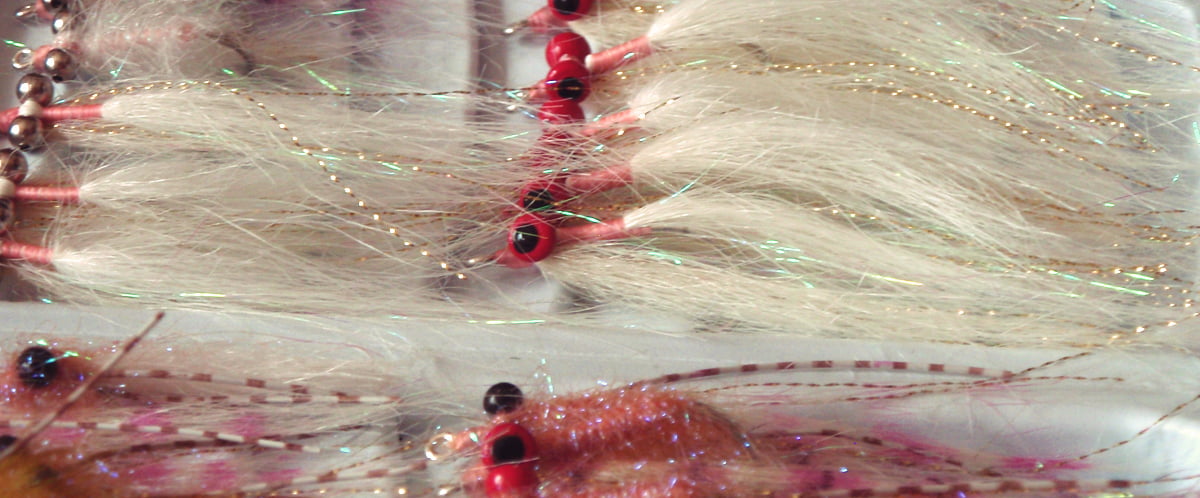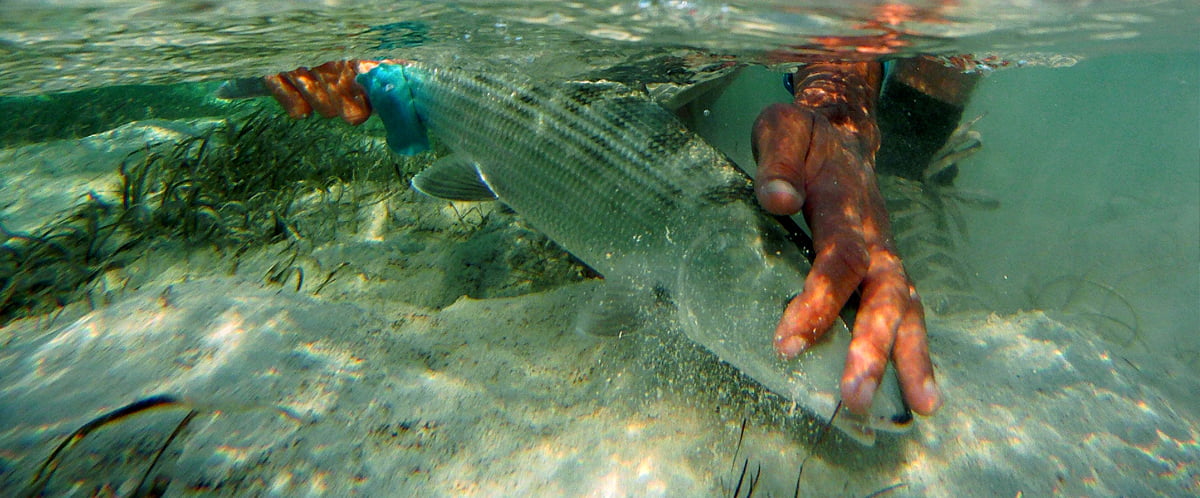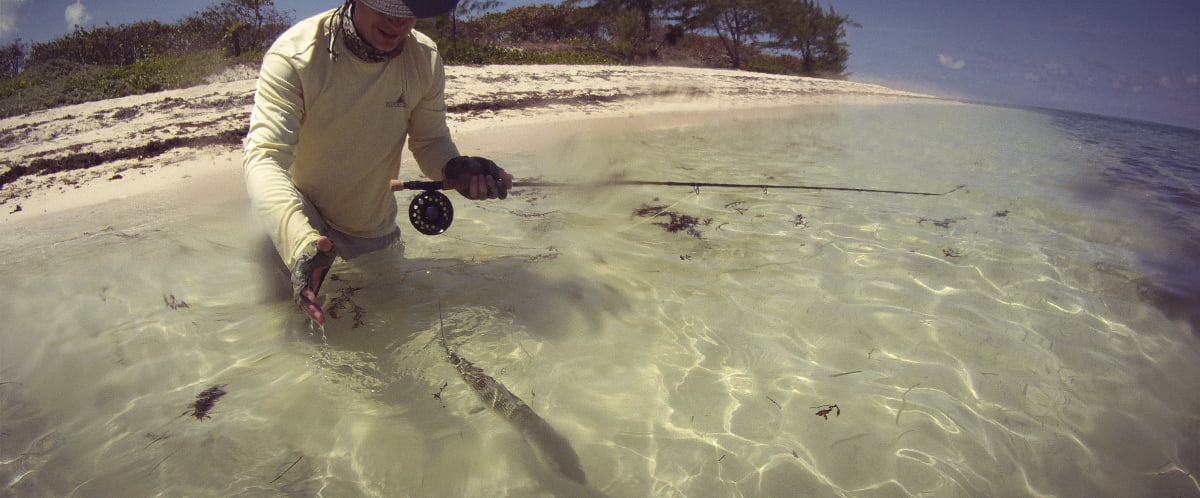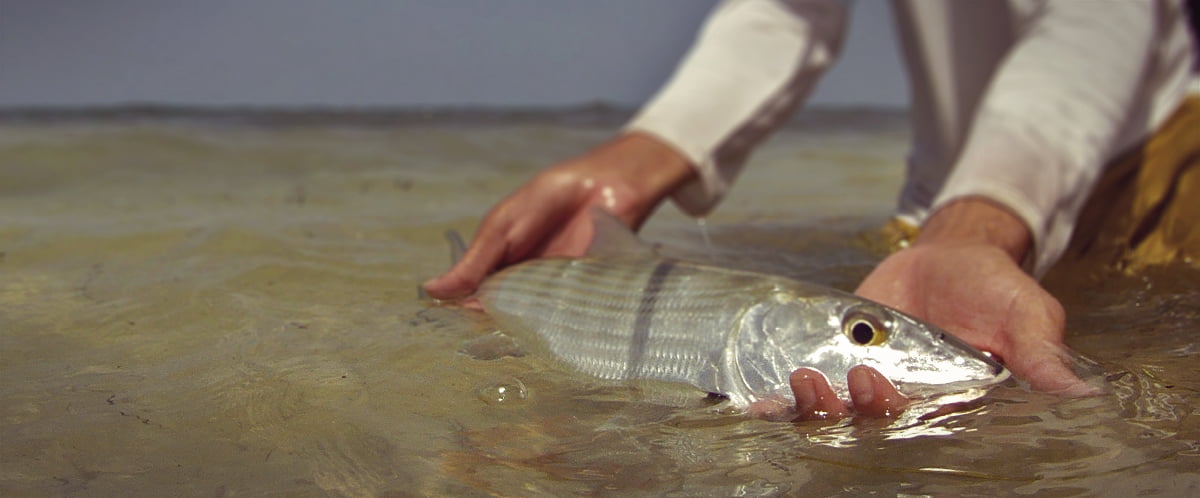Here’s a great video from Bonefish & Tarpon Trust. Learn the best bonefish catch and release practices from BTT Bahamas Initiative Manager Justin Lewis. Proper fish handling is essential to the survival of your catch, and to the overall health of the fishery, especially when you consider that research has shown that a bonefish kept out of the water for more than 15 seconds is 600% more likely to die! That is a shocking statistic.
Be a part of the solution and help preserve our fisheries for our daughters and sons. Educate. Share. Practice.
What is the Strip-Strike?
A strip-strike (a.k.a. strip-set) is a long pull with the line-hand to set the hook while fly fishing. While it’s mostly used in saltwater, but is just as effective for top-water bass fishing or streamer fishing for trout. However, in saltwater it is de rigueur. Trout-set on a bonefish and the only reward you’ll get is a resigned sigh from the guide.[1] Can’t take a picture of that.
Why does a strip-strike work on bonefish, but trout-set doesn’t? The answer that most saltwater anglers have heard is: “Raising the rod—trout set—pulls the fly away from the fish. But, if you strip-strike and miss, the fly only moves a foot or so and will still be in the zone so you can get another chance at that fish.”
Ok, fine, but that doesn’t explain why the trout set fails to actually set the hook at all. I’m not sure I’ve ever heard or read the real reason it’s nearly impossible to hook bones with a trout-set. The answer is actually simple, but does require an overview of how bonefish feed. Most freshwater species—trout, bass, etc.—eat a fly and turn. Trout turn back to their lie after taking a fly from the surface or snatching a nymph. Bass often take their food in a turning maneuver, heading back to their ambush spot. In either case the fish is headed away from the angler when he strikes, and the fish has its mouth closed around the fly. Raising the rod means you come tight and usually hook the fish in the corner of the mouth. Perfect.
This is exactly opposite from bonefish. Bonefish mostly feed on prey that only runs a short distance and then hides on the bottom. Of course, I have seen bonefish feeding on minnows and at those times they will strike a fly hard. But day in, day out, bonefish pick their food up off the bottom.
An Embarrassment of Riches
Bonefish fly patterns: selecting them is arguably one of the most frustrating elements in any salt water anglers quest to consistently catch bonefish. This is probably because of the sheer variety of bonefish flies on the market, with more fly pattern variations appearing every day. Just take a look at Instagram #bonefishflies and you’ll see what I mean, and that’s (mostly) just the amateur bonefish fly tying world. Or, worse, one look in the saltwater fly bins of any Midwest tackle shop and you’re probably going to begin questioning the nature of reality itself. (There’s just so many colors, so many colors… [suck thumb and curl into fetal position])
What’s the solution? Just buy two of all the bonefish flies you find, one heavy and one light? First, you’d go broke, and, second, you’d probably catch only three bonefish—one on each version of the pattern that worked, and another one on some random fly you didn’t think would work but you got sick of not catching fish so you started throwing everything at them.
We’ve put together a few pointers for choosing the best fly patterns for your next saltwater fly fishing trip. Ours is specifically for bonefish, but the same principles apply for other species.
TIPS FOR CHOOSING THE BEST BONEFISH FLIES:
- Carry a variety of weights. Include heavy, medium and weightless flies of the same pattern. Of course, you can always cut off weight, but it’s difficult to add, so err on the side of slightly heavier.
- Match a variety of prey species. Crabs, shrimp and worms of various sizes.
- Know your flats. Research the area you’ll be fishing. Is it sandy, coral, grass, mixed bottom? How deep? Will you be fishing from a skiff or wading.
It’s common knowledge that bonefish are no good to eat; as their name suggests, they are full of bones. All Cayman bonefishing is catch-and-release. We all want these fish to be here the next time we hit the water; we want them here for our kids to enjoy just as much as we have. It’s up to us—the anglers—to keep our fish healthy with proper care.
Good release practices actually begin before you actually hook a bonefish, starting with the fly itself. Barbless flies will actually hook more fish and makes releasing them soooo much easier. Due to their rubbery mouths, bonefish almost never throw barbless flies.
Bonefish exposed to air
for more than 15 seconds
are 600% more likely to die.
Just Below the Surface from joel jefferson on Vimeo.
FISH BONES guide and amateur videographer, Joel Jefferson takes to the waters (and just below) to give us a taste of fly fishing in Cayman. He might be an entrepreneur, new dad, civic volunteer and guide, but he still spends more time on the water than you’d think possible. We’re all jealous. Enjoy!
Bonefish: the Silver Bullet
Bonefish are strong, and fast. Pictured here are two common bonefish hooks that were reduced to “not hooks” after an encounter with bonefish. The smaller hook is a #6 and the larger a #4, both stainless Mustad® 34007 models.
The larger hook was straightened after a smallish, 2-2½ pound bone wrapped the 14-pound leader around a sponge and left town. The smaller hook was left in its present condition after a long run by a 5+ pound bonefish. Even though the drag was loose, the sheer pressure created by the drag of 100 feet of fly line through the water was enough to do that damage—opening the hook and ripping most of the material off the fly.
These were standard saltwater fly fishing hooks—the type used on many commercial flies of that time. But if a bonefish could open them so easily, then what hook should I be using. Well, I got myself a collection of hooks, a scale and a pliers and began testing. Here is what I discovered…
Fly Casting Double Haul & The Stealth Cast
It was windy, too windy to be wading thigh-deep in cold water. I could clearly see the tails of bonefish on the shallow flat rising in front of me, but with the wind in my face I had better odds of being beaned by a coconut than actually getting one of them to see my fly. Still, I’d come here to try. My first few casts were tentative, feeling out the situation. Not good: the line piled up about halfway to the fish, which fed on oblivious of my presence. I tried harder, keeping my cast low and really muscling it into the rising morning breeze. Suddenly a small gust caught my cast and in an instant I was draped in flyline.
I raged at the wind, pulling lengths of line off my clothing, and false-cast hard again into the breeze. Bad to worse. The bonefish continued to feed on into the tide, easing farther away with each futile cast I made. My leader looked liked I’d practiced tying knots and my fly was fouled in a loop of monofilament which had wrapped around one eye, dragging the fly sideways through the water. Humiliated, I retreated to shore and left the flat in peace…
*


